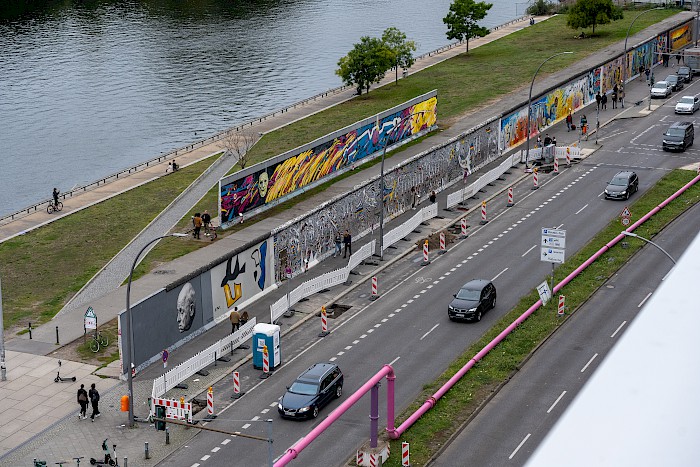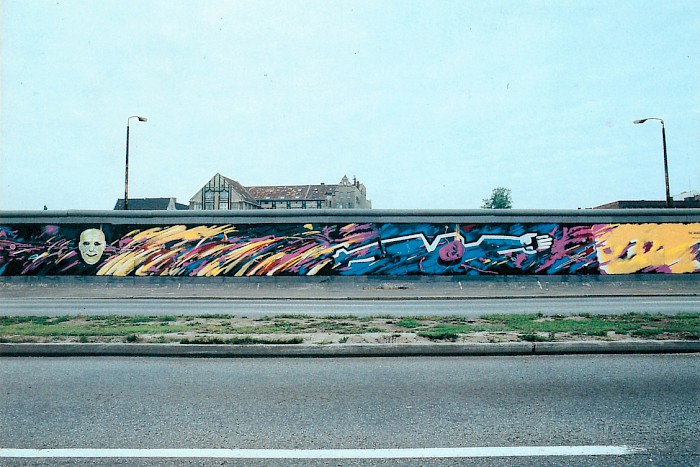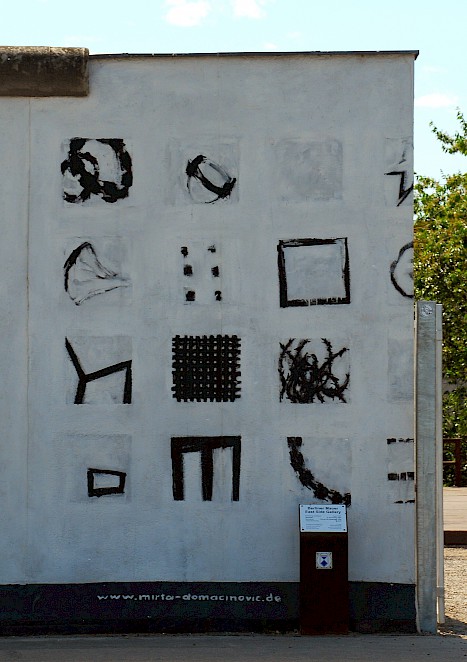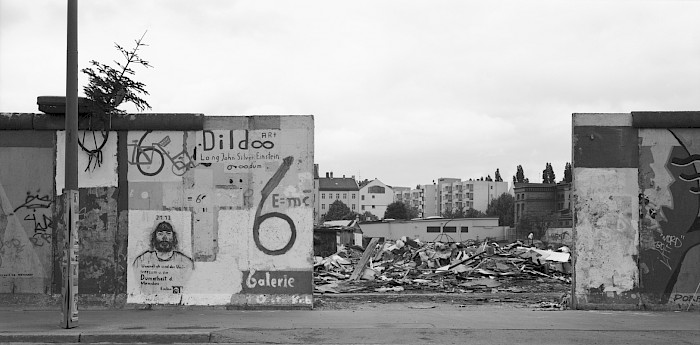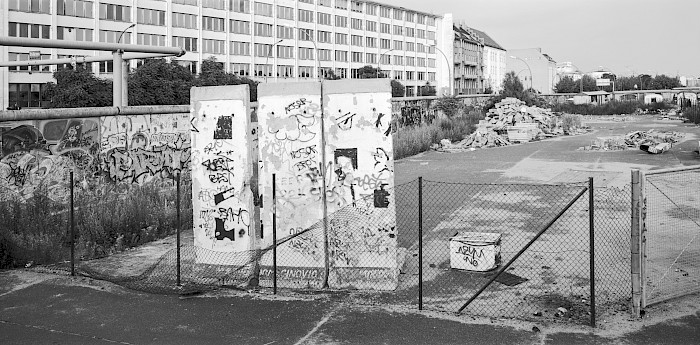Relocated artworks
Four works of art at the East Side Gallery were moved from their original location and placed in the nearby park area. Openings in the Gallery wall had to be made to construct access roads to the new buildings and to the boating dock for the Mercedes-Benz Arena.
Kikue Miyatake: “Paradise out of the Darkness“

The abstract painting "Paradise Out of the Darkness" was created by Kikue Miyatake, the only Japanese woman to participate in the East Side Gallery project. The blue ring symbolizes the joint power of the two German states; clouds of color represent the "blossom rhythm of love." The artist wanted her mural to bring color and hope to the gray Mühlenstraße. She also wanted to express her hope that peace and freedom would prevail after the end of the Cold War. The paintings by the award-winning artist and lawyer have been exhibited worldwide.
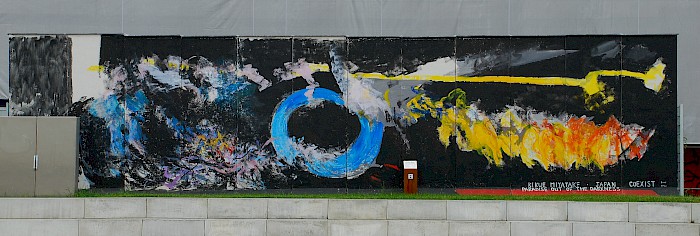
Kikue Miyatake’s mural was the first work to be moved from the Gallery into the former border strip in 1998. The opening allowed an access road to be built to the former granary, which housed a discotheque in the mid-1990s.
Kikue Miyatake: “Paradise out of the Darkness“
Wjatscheslaw Schljachow: “Die Masken“
The painting "The Masks" shows a crumbling mask alongside the depiction of a figure of strength. In his mural, Wjatscheslaw Schljachow, alias Irkut Slavin, shows how German society had to remove its mask during this time of upheaval only to quickly put on a new one. Thus, its appearance changed, but its essence remained the same. The lawyer, artist, political scientist and publicist moved to the GDR with his German family in 1983, but later returned to Russia, where he died in 2021.
Although Schljachow’s mural was the largest section of the Gallery to be relocated, there was no public protest. The Anschutz Entertainment Group moved forty sections of the Wall to the park to make way for its boating dock in 2006.
Wjatscheslaw Schljachow: “Die Masken“
Karina Bjerregaard and Lotte Haubart: “Himlen over Berlin“
The work by Karina Bjerregaard and Lotte Haubart is an expression of elation about the opening of the Berlin Wall. It was inspired by the Wim Wenders film, "Wings of Desire" and by the songs of Nina Hagen. The artists read about the call to participate in the Gallery in a Danish newspaper and traveled to Berlin two days later.
“I could perhaps understand the need to use some of the land behind the Berlin Wall, [...] but I find it disrespectful to simply remove our mural."

The mural was removed to make way for an access road to the "Living Levels" residential high-rise. There action led to loud protests, demonstrations and citizens' initiatives against the removal in 2013. The public outcry succeeded in preventing further sections of the Wall from being removed to create a wider access road. It also led the Berlin state government to reject any more construction projects on the East Side Gallery.
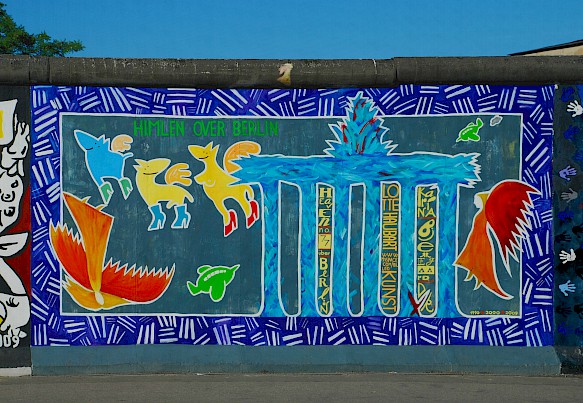
It saddens Karina Bjerregaard that her mural, which she created with Lotte Haubart, is no longer part of the East Side Gallery. She has complained that, in its new remote location, it is often attacked by graffiti. Bjerregaard still feels that painting over the mural is deeply disrespectful.
Karina Bjerregaard and Lotte Haubart: “Himlen over Berlin“
Mirta Domacinovic: “Zeichen in der Reihe“
In her painting, Mirta Domacinovic portrays symbols of war, torture, rape and dictatorship to express her concern over the rise of nationalism in Yugoslavia. In 1981, she and her family immigrated from Yugoslavia (Croatia) to West Germany, where she studied art and painting.
"Signs in the Row" ceased to exist as a work of art in the mid-1990s. It was moved the first time during the eviction of the trailer camp in 1996. The Trockland company later moved addition Wall segments to the park to create access to its hotel and residential complex "Pier 61 I 64." The artwork was reassembled in 2022.
“The question is whether these things can’t coexist […] that they do both in such a way that the Wall is able to stay.”
Parts of the mural "Signs in the Row" may have been moved to Stralauer Platz as early as 1997 to make room for construction vehicles.
Today, Mirta Domacinovic says she is pleased with how the area around the East Side Gallery has developed and become so lively, but she is annoyed that her artwork was moved. She wishes there had been better synchronization between the urban development and the preservation of the Gallery.
Mirta Domacinovic: “Zeichen in der Reihe“
Can we get rid of the Wall?
